Login to enhance your online experience. Login or Create an Account
Volvo 260 Series 1975-1985 Haynes Workshop Manual USED
|
USED Volvo 260 Series 1975 - 1985 Haynes Owners Service Repair Manual in good condition, hardback covers covers all Volvo 262, 264 and 265/260 models built from 1975 to 1985 with 2664cc or 2849cc V6 petrol engines with carburettors or fuel injection.Inside this manual you will find: Routine Maintenance, tune-up procedures, engine repair, cooling and heating, air-conditioning, fuel and exhaust, emissions control, ignition, brakes, suspension and steering, electrical systems and wiring diagrams. .
|
The Volvo 220 series is a range of executive vehicles yielded by Volvo from 1974 with 1993, with over 2.8 million units available internationally. The 220 series was basically an up-to-date adaptation of the 140; both were crafted by Jan Wilsgaard. It shared the same body, however, included a quantity of mechanical plus protection improvements. The 220 changed the 140 as well as the 140-based 164, plus overlapped creation of the Volvo 700 series introduced inside 1982. As the 240 stayed favored, just the 260 was displaced by the 700 series --- that Volvo advertised alongside the 240 for another decade. The 700 series was changed a year before the 240 was discontinued.
The Volvo 240 was Volvo s best-selling auto from 1975 till 1982. During those years inside European markets, its companion was initially the small Volvo 66, then its substitution, the 300 series.
The Volvo 240 plus 260 series was introduced inside the autumn of 1974, plus was initially accessible because six variations of the 240 Series plus 2 variations of the 260 Series. The 240 Series was obtainable in sedan or station wagon, yet the 260 Series was accessible because a coup, four-door sedan, or station wagon. The 210 looked much like the earlier 140 plus 164 Series, for they shared the same body shell plus were mostly the same within the cowl rearward. But, the 220 included most attributes plus shape ingredients tried inside the Volvo VESC ESV inside 1972, that had been a prototype test inside auto protection. The total protection of the driver plus guests inside the event of the crash was greatly improved with especially big front plus back end crumple zones. The 220 Series had MacPherson strut sort front suspension, that improved area about the engine bay, when the back suspension became a modified variation of which fitted with the 140 Series. The steering was greatly improved with all the installation of rack-and-pinion steering, with energy steering fitted because standard with the 244GL, 264DL plus 264GL, plus there were certain modifications produced with the braking program construction, considering it requirements a significant vertical room along with a sturdy top mount, that unibodies may supply, whilst benefiting them by distributing stresses. The strut usually generally carry both the coil spring about that the body is suspended as well as the shock absorber, that is normally inside the shape of the cartridge installed in the strut. The strut could have the steering arm built into the lower outer part. The complete assembly is easy plus is preassembled into a unit; additionally by eliminating the upper control arm, it enables more width inside the engine compartment, that is helpful for small vehicles, especially with transverse-mounted machines like many front wheel drive cars have. It is further simplified, when required, by substituting an anti-roll bar for the radius arm. For those factors, it has become virtually ubiquitous with cheap producers. Additionally, it has an convenient way with set suspension geometry.
The key changes were produced with the engine. The 1974 240 series retained the B20A inline-four engine within the 140 Series inside certain markets, with all the new B21A engine accessible because an alternative found on the 240 DL models. The hot B21 engine had been a 2127 cc, four-cylinder device, that had a cast-iron block, a five-bearing crankshaft, along with a belt-driven overhead camshaft. This engine yielded 97 PS for the B21A carburettor 242DL, 244DL plus 245DL, plus 123 PS for the B21E fuel-injected 244GL. All 240s were fuel-injected inside the US market; the carbureted B20 plus B21 motors were not accessible due with emissions laws.
1975-1978 Volvo 245 DL station wagon 01.jpg 1975 Volvo 245 DL wagon -- 09-05-2011 front.jpg
First-generation 245s inside global plus North American versions. The global variation has white parking lights plus heavier headlamps; the American adaptation has side markers.
The 264 models had a completely fresh V6 B27E engine called the Douvrin engine. This engine was developed jointly by Peugeot, Renault plus Volvo, plus is consequently commonly termed as the "PRV engine". The B27E engine had a displacement of 2664 cc, an aluminium alloy block, plus wet cylinder liners. This engine yielded 140 bhp for both the 264DL plus 264GL. All models were accessible with a choice of four-speed guide or perhaps a three-speed automatic transmission. Overdrive was additionally optional found on the manual 244GL, whilst a five-speed manual gearbox was optional found on the 264GL plus 265GL.
The front end of the auto was furthermore completely restyled -- which being the many apparent change of that prepared the 220 Series distinguishable within the earlier 140 plus 160 Series. Other than all of the changes said above, the 210 Series was virtually identical with the 140 plus 160 Series within the bulkhead with the back end. The dashboard was extracted within the protection fascia introduced for the 1972 140-series - however was changed again inside 1980 with all the instrument pod created considerably bigger as well as the radio repositioned close to the top of the dashboard.
Canadian-spec 1980--1982 240DL
In the autumn of 1975, the 265 DL property became accessible alongside the existing range, plus this was the initially manufacturing Volvo property with be driven with a six-cylinder engine. Around this time, the existing 220 Series underwent certain technical changes. The B20A engine was dropped from certain markets, though it stayed obtainable in additional markets till 1977. Its substitution, the B21A engine, received a new camshaft that improved the output from 93 with 100 PS. The two-door 262 DL plus GL sedans, the 264DL saloon as well as the fresh 265DL property were available outside North America with all the brand-new V6 B27A engine. This engine was virtually identical with the fuel-injected V6 B27E engine except it had an SU carburettor rather of gas injection, plus consequently it yielded a lower output of 125 PS. The choice of gearbox was equally greatly improved, with overdrive today accessible because an alternative in every guide models except the base-model 242L plus 245L. As before, the 3-speed automatic was optional inside each model.
The initial models with reach the US marketplace were 1975 models built with the older pushrod B20F engine, with all the modern OHC B21F engine generating its method to America for the 1976 model year. A fuel-injected variant of the V6, the B27F, was introduced with the US inside the 1976 260 series. The US plus Canadian 200-series ranges were not identical; the B21A carbureted engine was not obtainable in the US, nevertheless was the base engine inside Canada from 1977 from 1984. 1975-76 Canadian models were identical with their US counterparts. Starting inside 1985, Canadian models received the US model machines, generally inside 49-state shape, except for the Turbo, that just had California emission controls.
1988--1991 Volvo 240 GL wagon
Incremental improvements were produced virtually each year of the manufacturing run. One of the main improvements was the introduction of the oxygen sensor inside 1976, that Volvo called Lambda Sond plus developed inside combination with Bosch. It added a suggestions loop with the K-Jetronic gas injection program absolutely used, that enabled fine-tuning of the air plus gas mixture plus consequently yielded superior emissions, drivability plus gas economy.
Regarding one-third of all 240s available were station wagons, that showcased really big cargo area of 41 cubic feet. They can be outfitted with a rear-facing foldable jumpseat inside the passenger location, generating the wagon a seven-passenger car. The jumpseat came with three-point seat belts, plus wagons were tailored with have a reinforced floor section, safeguarding the occupants of the jumpseat inside the event of the rear-end collision. Both the 220 series as well as the 700 series became a status signal internationally.
The last 210 yielded became a blue station wagon built with the Italian specification plus called the "Polar Italia", currently shown at the Volvo World Museum.
A rack plus pinion is commonly found inside the steering device of vehicles or different wheeled, steered cars. Rack plus pinion offers a less effective mechanical benefit than many other mechanisms including recirculating ball, nevertheless less backlash plus better suggestions, or steering "feel". The system can be power-assisted, commonly by hydraulic or electric signifies.
The utilize of the varying rack was invented by Arthur Ernest Bishop, inside the 1970s, thus because with boost car reaction plus steering "feel," specifically at significant speeds. He furthermore built a cheap click forging procedure with manufacture the racks, eliminating the requirement with machine the gear teeth.
The 210 series was available with 3 families of machines. Many 240s were loaded with Volvo s own red block, 2.0-2.3 litre four-cylinder machines. Both overhead valve plus overhead cam versions of the red block motors were installed inside 240s. The B20 was employed just inside the early years plus subsequently substitute by B19, a small adaptation of the B21. V6 machines were moreover accessible, initial inside the 260-models, and later inside the GLE- plus GLT-versions of 240. Known because the PRV family, they were developed inside a three-way partnership amidst Volvo, Peugeot plus Renault, 240 diesel models are driven by diesel motors bought from Volkswagen. In Greece plus Israel the 1.8 liter B17 engine was accessible. This difficult functioning little twin-carb engine developed 90 PS, plus had considerably high gas expenditure than even the turbocharged top variation.
Initially the overhead camshaft versions were available because optional equipment found on the 240, becoming standard in every markets by the 1976 model year. The overhead camshaft motors were obtainable in displacements of 2.0, 2.1, plus eventually 2.3 litres. The B21 showcased an 80 mm stroke, plus 92 mm bore. In the US, the B21 s force output ranged anywhere between 98 hp plus 107 hp, based about variations inside the compression ratio plus was usually provided with a B or M camshaft.
The motors are tilted approx 15 levels with left with create area for the more complicated injection systems. B19 plus B21 blocks is diagnosed by water plugs about 1 side of the block. The B23 blocks have them about both sides. The camshaft is driven with a toothed belt which is driven off the front of the crankshaft. The belt turns the intermediate shaft too, which forces the oil pump, distributor as well as the gas pump of carburetor models.
In 1981 the B21FT, a B21F with a turbo, was introduced with a compression ratio of 7.5:1 mated with a Garrett T3 turbocharger along with a T camshaft. More turbo variants, not available inside the US marketplace, were the B19ET as well as the B21ET, based found on the B19E plus B21E respectively. The turbocharger improved energy output with 127 hp for the B21FT, plus 157 hp for the B21ET. Additionally brand-new for the 1981 model year was the B23, with a displacement of 2.3 litres bore). Aside within the improved bore size, the engine is identical with the B21. Volvo chosen a somewhat different mold for the turbo machines with cast a boss for the turbo oil return line. Because a turbocharged engine has a high running temperature they chosen sodium filled exhaust valves along with a thermostat controlled oil cooler.
In 1983 the B23 was introduced with the American marketplace. Additionally introduced inside 1983, the "intercooler boost system" was introduced for the B21FT motors. The IBS kit consisted of a intercooler, appropriate ducting, a new enthusiast shroud, new oil cooler lines plus mounting brackets, plus optionally an automatic transmission kit. IBS raised the output of the B21FT with 162 hp, somewhat over the non intercooled European marketplace B21ET s 157 hp.
Midway from the 1984 model year, the "intercooler boost system" became standard about American 240 Turbos. Additionally a bigger clutch along with a stepped flywheel were included.
The B200 among others driven the Volvo 360.
In 1985 a revised, "low friction" shape was introduced, dubbed the B200 plus B230. Many components had shape changes, longer rods longer), pistons with a lower compression height, lower friction bearings, a crankshaft with 8 counterweights along with a thick harmonic balancer inside the crank pulley. 1989 saw an upgrade with the crankshaft, with a relocated axial push bearing back with the amount 5 log, bigger primary bearings, rods were enlarged with 13 mm from 9 mm inside 1990. Additionally introduced inside 1989 were 16 valve, twin-cam variants of the B200 plus B230, dubbed the B204 plus B234 respectively. The B204 was equally obtainable in turbo shape inside certain markets where big displacement motors were taxed seriously. It came inside 2 versions: The B204GT turbo engine operates with a lead resistant lambda probe plus generates around 220 hp. The B204FT has a catalytic converter plus generates 185 hp. Both were the initially redblocks standard loaded with oil squirters for piston cooling. Crankshaft, conrods plus pistons all forged. Exhaust valves were sodium filled for cooler surgery. It has small valves plus stiffer valve springs than n/a 16V. Crank torque is 290 N m at 2950 rpm for the GT, plus 280 N m for the FT. Other variations within the usual 16V redblock engine are it utilizes a remote installed oil filter along with a windage tray.
For the B230 motors 1993, piston cooling, oil squirting jets were put into aid relieve piston slap difficulties found on the turbo motors. Another modification was with go from a square toothed timing belt set about a round toothed timing belt setup that prepared for quieter belt running.
The last redblocks were produced inside 1998, whenever the 940 model was discontinued inside Europe, though the 940 was discontinued inside 1995 inside North America.
The B27 became a 90-degree V6 yielded by Peugeot, Renault, plus Volvo inside collaboration plus is frequently called the "PRV." This engine was unusual at the time, being composed of numerous little components inside a modular shape. Volvo improved the displacement with 2.8 litres inside 1980 with all the introduction of the B28E plus B28F machines, that were inclined with top-end oiling problems plus premature camshaft wear. However, Volvo continued with utilize the B28 V6 inside their hot 760 model. DeLorean Motor Company went about with employ the PRV B28F inside their DMC-12 car, along with a 3-litre variation was selected inside the 1987--1992 Eagle Premier, Dodge Monaco, plus Renault 25. The up-to-date B280 engine employed inside the final years of the 760 plus 780 models didn't experience the same premature camshaft wear because the earlier PRV motors.
The 200-series vehicles were diagnosed initially by badges about their torso lid or back hatch inside a way synonymous with the program chosen for past models.
1974--1982: 3 digits followed by trim level letters. For example; 244 plus 245 were 4-cylinder sedans plus wagons respectively plus 264 plus 265 cylinder sedans plus wagons respectively.
1983--1993: 240 followed by trim level letters Special models often omitted the "240".
American-market 1992 240 sedan
For the American market:
1975--1979: trim level letters preceded by 3 digits, 4 for sedans, 5 for station wagons)
1980--1985: trim level letters. Note: A tiny quantity of 4-cylinder 260s were yielded, namely the 1980--1981 GL sedan, that can either be a 240 or perhaps a 260. Additionally, diesel 240s have six-cylinder motors.
1986--1993: 240 followed by trim level letters, though it happens to be reflected inside the engine compartment label, and found on the label inside the torso about sedans or beneath the principal cargo compartment storage lid about wagons.
A station wagon, furthermore property automobile or property, is an automotive body-style variant of the sedan/saloon with its rooftop extended rearward over a shared passenger/cargo amount with access at the back through a 3rd or fifth door, rather of the torso lid. The body fashion changes the standard three-box shape into a two-box shape --- with include an A, B, plus C-pillar, and a D-pillar. Station wagons may flexibly reconfigure their inside amount through fold-down back seats with prioritize either passenger or cargo amount.
The American Heritage Dictionary defines a station wagon because "an vehicle with 1 or even more rows of folding or removable seats behind the driver plus no luggage compartment nevertheless an location behind the seats into that suitcases, parcels, etc., is loaded from the tailgate."
Whenever a model range involves several body designs, like sedan, hatchback plus station wagon, the models usually share their platform, drivetrain plus bodywork forward of the A-pillar. In 1969, Popular Mechanics mentioned, "Station wagon-style ... follows which of the manufacturing sedan of that it happens to be the counterpart. Many are found on the same wheelbase, provide the same transmission plus engine choices, as well as the same comfort plus efficiency choices."
Station wagons have evolved off their early employ because specialized cars with carry persons plus luggage with plus from a train station, plus have been advertised internationally.
Glass-lens headlamps compliant with global ECE headlighting guidelines, 1974--1993
Fender-mounted side turn signal repeaters introduced different years inside different European markets per nearby regulations; internationally except North America beginning inside 1984. Australia beginning inside 1989.
Daytime running lights implemented with a 2nd, bright filament inside the parking lamp lights, introduced mid-1970s inside Scandinavia as well as the UK, plus inside different markets outside North America inside the early 1980s.
White parking lamps
Aspheric sideview mirrors
Diesel engine accessible from 1979 with 1993.
Produced 1974--1993
Production volume: 2,862,053
Body style: 4-door sedan, 2-door sedan, 5-door station wagon, 3-door ambulance, 3-door hearse
Engines: See the engine section for more detail. Engine designs included:
B20 four-cylinder inline OHV
B17, B19, B21, B23, B200, B230 four-cylinder inline OHC
B21ET, B21FT four-cylinder inline OHC turbo
B27, B28 V6 OHC
D20 five-cylinder inline OHC diesel
D24 six-cylinder inline OHC diesel
Transmissions: Volvo available different transmissions depending found on the year/model/market/engine combinations including the:
M40
M41
M45
M46
M47
BW35, BW55 or AW55
AW70 or AW71
Brakes: Hydraulic, disk brakes about all 4 wheels.
Front: 4 opposed piston calipers with either strong or vented rotors
Rear: twin piston calipers using strong rotors plus key parking brake drums.
Triangulated braking circuits about non-ABS vehicles with both front calipers plus 1 back caliper per circuit. ABS vehicles employed general diagonal split braking program.
Standard protection features
Driver airbag
Anti-lock braking system
Dimensions:
Wheelbase: 264 cm/104 in
Length:
1975--1980: 490 cm/193 in
1981--1993: 479 cm/189 in
Length:
1975--1982: 490 cm/192.5 inside - 1975--1985 Cdn 240)
1983--1985 US: 479 cm/189.4 in
1986--1993 US/Cdn: 4?? cm/190.? in
Weight: 2,840 lb
Despite its non-sporting image the Volvo 240 had been a effective rival inside touring vehicle racing inside the 1980s. In 1983 Volvo yielded an development adaptation of the 240 Turbo with a heavier turbocharger plus additional performance modifications. All of these unique vehicles were reputedly exported with the United States. Many of them were subsequently stripped of their racing equipment plus available because standard road vehicles, that later led Volvo into issues with all the sport s governing body, the FIA, that questioned whether the required 500 vehicles had the reality is been built. Debate continues to the day amidst fanatics regarding how most special-edition vehicles were built plus what occurred for them.
However, the 240 Turbo proven a lucrative rival. In Group A racing shape, the 240T weighed 1,065 kg, as well as its turbocharged 2.1-litre engine yielded around 350 bhp. Although it had been a big automobile plus lacked the agility of a few of its competitors, largely due with its skinny tyres compared with its opposition, it was swiftly inside a straight line about quicker circuits like Monza, Hockenheim plus Bathurst) plus proven with be extremely reliable. Volvo didn't run the vehicles straight, rather engaging the services of established groups with make plus manage them.
The Eggenberger Motorsport team was the many lucrative of these. Late inside the 1984 European Touring Car Championship, Swedish team Sportpromotion earned the EG Trophy race at Zolder circuit plus followed which with 2nd inside the 500 km del Mugello. In 1985, Volvo finalized Swiss engine guru Reudi Eggenberger with run its functions team. Eggenberger Motorsport, with team motorists Gianfranco Brancatelli plus Thomas Lindstrm, earned the 1985 ETCC outright, seeing off challenges from BMW, plus defending ETCC champions TWR that were running the V8 engined Rover Vitesse instead of the V12 Jaguar XJS which had dominated 1984 following Jaguar had decided with focus about Sports Car racing.
Eggengerger moved with race Ford Sierra s inside 1986 plus Volvo contraced Belgian based team RAS Sport with be its functions team inside the ETCC, with defending champion Lindstrm being joined by ex-Formula One plus Grand Prix motorcycle racer Johnny Cecotto, and Ulf Granberg plus Anders Olofsson. The team was competitive inside 1986, taking wins at Hockenheim, Anderstorp, Brno, sterreichring plus Zolder. Unfortunately though, the wins at Anderstorp as well as the sterreichring were removed within the team due with illegal gas. The disqualifications might see Lindstrm unable with protect his title.
Around the globe, additional groups were moreover running the Volvo 240T with a fair degree of achievement. New Zealander Mark Petch had bought the 240T within the Magnum team inside Sweden, plus motorists Robbie Francevic plus Michel Delcourt claimed the Wellington 500 street race inside New Zealand inside January 1985 following beginning within the back of the grid due with the auto not arriving inside time with qualify. Francevic then went about to complete 5th inside the 1985 Australian Touring Car Championship, taking wins at Symmons Plains plus Oran Park. Thomas Lindstrm joined Francevic with win the 1986 Wellington 500 plus brought with him from Europe the newest engine plus suspension updates for the auto. The Petch team might become the "Volvo Dealer Team" inside 1986 plus expand with 2 vehicles with all the alternative being for John Bowe that had driven the Volvo with Francevic at the 1985 Bathurst 1000. Francevic claimed the 1986 Australian Touring Car Championship, providing Volvo their initial plus just Australian Touring Car Championship win, and providing the 240T the distinction of being the initially turbo driven vehicle with win the championship because its inception inside 1960. The vehicle moreover earned the Guia Race inside Macau consecutively inside 1985 plus 1986.
Volvo withdrew within the sport at the finish of the 1986 season, partly due to the controversy over its adherence with the FIA s homologation rules, and considering the 240T had attained exactly what it set out with do. Volvo didn't return with touring auto racing till the advent of Super Touring racing inside the early 1990 s, with all the 850 model.
The 240 equally liked several achievement inside different divisions of motorsport. Although Volvo had pulled from rallying inside the early 1970 s, the 240 Turbo did see action because a Group A rally vehicle inside the mid-1980s, however without functions support it met with just limited achievement. The usually aspirated adaptation stayed qualified for global competition till 1996, plus for this day the 240 remains a common clubman s rally auto inside Scandinavia. Its recognition has inside latest years been boosted with all the establishment of the Volvo Original Cup, or VOC. This really is a championship for recreational rally motorists utilizing Volvo 240s, 740s plus 940s. In the interests of expense control, just truly limited modifications are authorized with the vehicles. The series attracts big numbers of competitors, attracted by its cheap plus by the Volvo s rear-drive handling plus security.
Because it's inexpensive plus robust, the 240 has moreover become extremely usual inside folkrace contests. In the UK the 240 is favored for banger racing, due with its strength. The Volvo 240 is today a widespread choice alongside Ford Granadas plus Jags for utilizing at 2.0-litre + banger meetings.
Volvo 240 Haynes repair guide 1974-1993 NEW 1975 1976 1977 1978 1979 1980 1981 1982 1983 1984 1985 1986 1987 1988 1989 1990 1991 1992
The Volvo 240 was Volvo s best-selling auto from 1975 till 1982. During those years inside European markets, its companion was initially the small Volvo 66, then its substitution, the 300 series.
The Volvo 240 plus 260 series was introduced inside the autumn of 1974, plus was initially accessible because six variations of the 240 Series plus 2 variations of the 260 Series. The 240 Series was obtainable in sedan or station wagon, yet the 260 Series was accessible because a coup, four-door sedan, or station wagon. The 210 looked much like the earlier 140 plus 164 Series, for they shared the same body shell plus were mostly the same within the cowl rearward. But, the 220 included most attributes plus shape ingredients tried inside the Volvo VESC ESV inside 1972, that had been a prototype test inside auto protection. The total protection of the driver plus guests inside the event of the crash was greatly improved with especially big front plus back end crumple zones. The 220 Series had MacPherson strut sort front suspension, that improved area about the engine bay, when the back suspension became a modified variation of which fitted with the 140 Series. The steering was greatly improved with all the installation of rack-and-pinion steering, with energy steering fitted because standard with the 244GL, 264DL plus 264GL, plus there were certain modifications produced with the braking program construction, considering it requirements a significant vertical room along with a sturdy top mount, that unibodies may supply, whilst benefiting them by distributing stresses. The strut usually generally carry both the coil spring about that the body is suspended as well as the shock absorber, that is normally inside the shape of the cartridge installed in the strut. The strut could have the steering arm built into the lower outer part. The complete assembly is easy plus is preassembled into a unit; additionally by eliminating the upper control arm, it enables more width inside the engine compartment, that is helpful for small vehicles, especially with transverse-mounted machines like many front wheel drive cars have. It is further simplified, when required, by substituting an anti-roll bar for the radius arm. For those factors, it has become virtually ubiquitous with cheap producers. Additionally, it has an convenient way with set suspension geometry.
The key changes were produced with the engine. The 1974 240 series retained the B20A inline-four engine within the 140 Series inside certain markets, with all the new B21A engine accessible because an alternative found on the 240 DL models. The hot B21 engine had been a 2127 cc, four-cylinder device, that had a cast-iron block, a five-bearing crankshaft, along with a belt-driven overhead camshaft. This engine yielded 97 PS for the B21A carburettor 242DL, 244DL plus 245DL, plus 123 PS for the B21E fuel-injected 244GL. All 240s were fuel-injected inside the US market; the carbureted B20 plus B21 motors were not accessible due with emissions laws.
1975-1978 Volvo 245 DL station wagon 01.jpg 1975 Volvo 245 DL wagon -- 09-05-2011 front.jpg
First-generation 245s inside global plus North American versions. The global variation has white parking lights plus heavier headlamps; the American adaptation has side markers.
The 264 models had a completely fresh V6 B27E engine called the Douvrin engine. This engine was developed jointly by Peugeot, Renault plus Volvo, plus is consequently commonly termed as the "PRV engine". The B27E engine had a displacement of 2664 cc, an aluminium alloy block, plus wet cylinder liners. This engine yielded 140 bhp for both the 264DL plus 264GL. All models were accessible with a choice of four-speed guide or perhaps a three-speed automatic transmission. Overdrive was additionally optional found on the manual 244GL, whilst a five-speed manual gearbox was optional found on the 264GL plus 265GL.
The front end of the auto was furthermore completely restyled -- which being the many apparent change of that prepared the 220 Series distinguishable within the earlier 140 plus 160 Series. Other than all of the changes said above, the 210 Series was virtually identical with the 140 plus 160 Series within the bulkhead with the back end. The dashboard was extracted within the protection fascia introduced for the 1972 140-series - however was changed again inside 1980 with all the instrument pod created considerably bigger as well as the radio repositioned close to the top of the dashboard.
Canadian-spec 1980--1982 240DL
In the autumn of 1975, the 265 DL property became accessible alongside the existing range, plus this was the initially manufacturing Volvo property with be driven with a six-cylinder engine. Around this time, the existing 220 Series underwent certain technical changes. The B20A engine was dropped from certain markets, though it stayed obtainable in additional markets till 1977. Its substitution, the B21A engine, received a new camshaft that improved the output from 93 with 100 PS. The two-door 262 DL plus GL sedans, the 264DL saloon as well as the fresh 265DL property were available outside North America with all the brand-new V6 B27A engine. This engine was virtually identical with the fuel-injected V6 B27E engine except it had an SU carburettor rather of gas injection, plus consequently it yielded a lower output of 125 PS. The choice of gearbox was equally greatly improved, with overdrive today accessible because an alternative in every guide models except the base-model 242L plus 245L. As before, the 3-speed automatic was optional inside each model.
The initial models with reach the US marketplace were 1975 models built with the older pushrod B20F engine, with all the modern OHC B21F engine generating its method to America for the 1976 model year. A fuel-injected variant of the V6, the B27F, was introduced with the US inside the 1976 260 series. The US plus Canadian 200-series ranges were not identical; the B21A carbureted engine was not obtainable in the US, nevertheless was the base engine inside Canada from 1977 from 1984. 1975-76 Canadian models were identical with their US counterparts. Starting inside 1985, Canadian models received the US model machines, generally inside 49-state shape, except for the Turbo, that just had California emission controls.
1988--1991 Volvo 240 GL wagon
Incremental improvements were produced virtually each year of the manufacturing run. One of the main improvements was the introduction of the oxygen sensor inside 1976, that Volvo called Lambda Sond plus developed inside combination with Bosch. It added a suggestions loop with the K-Jetronic gas injection program absolutely used, that enabled fine-tuning of the air plus gas mixture plus consequently yielded superior emissions, drivability plus gas economy.
Regarding one-third of all 240s available were station wagons, that showcased really big cargo area of 41 cubic feet. They can be outfitted with a rear-facing foldable jumpseat inside the passenger location, generating the wagon a seven-passenger car. The jumpseat came with three-point seat belts, plus wagons were tailored with have a reinforced floor section, safeguarding the occupants of the jumpseat inside the event of the rear-end collision. Both the 220 series as well as the 700 series became a status signal internationally.
The last 210 yielded became a blue station wagon built with the Italian specification plus called the "Polar Italia", currently shown at the Volvo World Museum.
A rack plus pinion is commonly found inside the steering device of vehicles or different wheeled, steered cars. Rack plus pinion offers a less effective mechanical benefit than many other mechanisms including recirculating ball, nevertheless less backlash plus better suggestions, or steering "feel". The system can be power-assisted, commonly by hydraulic or electric signifies.
The utilize of the varying rack was invented by Arthur Ernest Bishop, inside the 1970s, thus because with boost car reaction plus steering "feel," specifically at significant speeds. He furthermore built a cheap click forging procedure with manufacture the racks, eliminating the requirement with machine the gear teeth.
The 210 series was available with 3 families of machines. Many 240s were loaded with Volvo s own red block, 2.0-2.3 litre four-cylinder machines. Both overhead valve plus overhead cam versions of the red block motors were installed inside 240s. The B20 was employed just inside the early years plus subsequently substitute by B19, a small adaptation of the B21. V6 machines were moreover accessible, initial inside the 260-models, and later inside the GLE- plus GLT-versions of 240. Known because the PRV family, they were developed inside a three-way partnership amidst Volvo, Peugeot plus Renault, 240 diesel models are driven by diesel motors bought from Volkswagen. In Greece plus Israel the 1.8 liter B17 engine was accessible. This difficult functioning little twin-carb engine developed 90 PS, plus had considerably high gas expenditure than even the turbocharged top variation.
Initially the overhead camshaft versions were available because optional equipment found on the 240, becoming standard in every markets by the 1976 model year. The overhead camshaft motors were obtainable in displacements of 2.0, 2.1, plus eventually 2.3 litres. The B21 showcased an 80 mm stroke, plus 92 mm bore. In the US, the B21 s force output ranged anywhere between 98 hp plus 107 hp, based about variations inside the compression ratio plus was usually provided with a B or M camshaft.
The motors are tilted approx 15 levels with left with create area for the more complicated injection systems. B19 plus B21 blocks is diagnosed by water plugs about 1 side of the block. The B23 blocks have them about both sides. The camshaft is driven with a toothed belt which is driven off the front of the crankshaft. The belt turns the intermediate shaft too, which forces the oil pump, distributor as well as the gas pump of carburetor models.
In 1981 the B21FT, a B21F with a turbo, was introduced with a compression ratio of 7.5:1 mated with a Garrett T3 turbocharger along with a T camshaft. More turbo variants, not available inside the US marketplace, were the B19ET as well as the B21ET, based found on the B19E plus B21E respectively. The turbocharger improved energy output with 127 hp for the B21FT, plus 157 hp for the B21ET. Additionally brand-new for the 1981 model year was the B23, with a displacement of 2.3 litres bore). Aside within the improved bore size, the engine is identical with the B21. Volvo chosen a somewhat different mold for the turbo machines with cast a boss for the turbo oil return line. Because a turbocharged engine has a high running temperature they chosen sodium filled exhaust valves along with a thermostat controlled oil cooler.
In 1983 the B23 was introduced with the American marketplace. Additionally introduced inside 1983, the "intercooler boost system" was introduced for the B21FT motors. The IBS kit consisted of a intercooler, appropriate ducting, a new enthusiast shroud, new oil cooler lines plus mounting brackets, plus optionally an automatic transmission kit. IBS raised the output of the B21FT with 162 hp, somewhat over the non intercooled European marketplace B21ET s 157 hp.
Midway from the 1984 model year, the "intercooler boost system" became standard about American 240 Turbos. Additionally a bigger clutch along with a stepped flywheel were included.
The B200 among others driven the Volvo 360.
In 1985 a revised, "low friction" shape was introduced, dubbed the B200 plus B230. Many components had shape changes, longer rods longer), pistons with a lower compression height, lower friction bearings, a crankshaft with 8 counterweights along with a thick harmonic balancer inside the crank pulley. 1989 saw an upgrade with the crankshaft, with a relocated axial push bearing back with the amount 5 log, bigger primary bearings, rods were enlarged with 13 mm from 9 mm inside 1990. Additionally introduced inside 1989 were 16 valve, twin-cam variants of the B200 plus B230, dubbed the B204 plus B234 respectively. The B204 was equally obtainable in turbo shape inside certain markets where big displacement motors were taxed seriously. It came inside 2 versions: The B204GT turbo engine operates with a lead resistant lambda probe plus generates around 220 hp. The B204FT has a catalytic converter plus generates 185 hp. Both were the initially redblocks standard loaded with oil squirters for piston cooling. Crankshaft, conrods plus pistons all forged. Exhaust valves were sodium filled for cooler surgery. It has small valves plus stiffer valve springs than n/a 16V. Crank torque is 290 N m at 2950 rpm for the GT, plus 280 N m for the FT. Other variations within the usual 16V redblock engine are it utilizes a remote installed oil filter along with a windage tray.
For the B230 motors 1993, piston cooling, oil squirting jets were put into aid relieve piston slap difficulties found on the turbo motors. Another modification was with go from a square toothed timing belt set about a round toothed timing belt setup that prepared for quieter belt running.
The last redblocks were produced inside 1998, whenever the 940 model was discontinued inside Europe, though the 940 was discontinued inside 1995 inside North America.
The B27 became a 90-degree V6 yielded by Peugeot, Renault, plus Volvo inside collaboration plus is frequently called the "PRV." This engine was unusual at the time, being composed of numerous little components inside a modular shape. Volvo improved the displacement with 2.8 litres inside 1980 with all the introduction of the B28E plus B28F machines, that were inclined with top-end oiling problems plus premature camshaft wear. However, Volvo continued with utilize the B28 V6 inside their hot 760 model. DeLorean Motor Company went about with employ the PRV B28F inside their DMC-12 car, along with a 3-litre variation was selected inside the 1987--1992 Eagle Premier, Dodge Monaco, plus Renault 25. The up-to-date B280 engine employed inside the final years of the 760 plus 780 models didn't experience the same premature camshaft wear because the earlier PRV motors.
The 200-series vehicles were diagnosed initially by badges about their torso lid or back hatch inside a way synonymous with the program chosen for past models.
1974--1982: 3 digits followed by trim level letters. For example; 244 plus 245 were 4-cylinder sedans plus wagons respectively plus 264 plus 265 cylinder sedans plus wagons respectively.
1983--1993: 240 followed by trim level letters Special models often omitted the "240".
American-market 1992 240 sedan
For the American market:
1975--1979: trim level letters preceded by 3 digits, 4 for sedans, 5 for station wagons)
1980--1985: trim level letters. Note: A tiny quantity of 4-cylinder 260s were yielded, namely the 1980--1981 GL sedan, that can either be a 240 or perhaps a 260. Additionally, diesel 240s have six-cylinder motors.
1986--1993: 240 followed by trim level letters, though it happens to be reflected inside the engine compartment label, and found on the label inside the torso about sedans or beneath the principal cargo compartment storage lid about wagons.
A station wagon, furthermore property automobile or property, is an automotive body-style variant of the sedan/saloon with its rooftop extended rearward over a shared passenger/cargo amount with access at the back through a 3rd or fifth door, rather of the torso lid. The body fashion changes the standard three-box shape into a two-box shape --- with include an A, B, plus C-pillar, and a D-pillar. Station wagons may flexibly reconfigure their inside amount through fold-down back seats with prioritize either passenger or cargo amount.
The American Heritage Dictionary defines a station wagon because "an vehicle with 1 or even more rows of folding or removable seats behind the driver plus no luggage compartment nevertheless an location behind the seats into that suitcases, parcels, etc., is loaded from the tailgate."
Whenever a model range involves several body designs, like sedan, hatchback plus station wagon, the models usually share their platform, drivetrain plus bodywork forward of the A-pillar. In 1969, Popular Mechanics mentioned, "Station wagon-style ... follows which of the manufacturing sedan of that it happens to be the counterpart. Many are found on the same wheelbase, provide the same transmission plus engine choices, as well as the same comfort plus efficiency choices."
Station wagons have evolved off their early employ because specialized cars with carry persons plus luggage with plus from a train station, plus have been advertised internationally.
Glass-lens headlamps compliant with global ECE headlighting guidelines, 1974--1993
Fender-mounted side turn signal repeaters introduced different years inside different European markets per nearby regulations; internationally except North America beginning inside 1984. Australia beginning inside 1989.
Daytime running lights implemented with a 2nd, bright filament inside the parking lamp lights, introduced mid-1970s inside Scandinavia as well as the UK, plus inside different markets outside North America inside the early 1980s.
White parking lamps
Aspheric sideview mirrors
Diesel engine accessible from 1979 with 1993.
Produced 1974--1993
Production volume: 2,862,053
Body style: 4-door sedan, 2-door sedan, 5-door station wagon, 3-door ambulance, 3-door hearse
Engines: See the engine section for more detail. Engine designs included:
B20 four-cylinder inline OHV
B17, B19, B21, B23, B200, B230 four-cylinder inline OHC
B21ET, B21FT four-cylinder inline OHC turbo
B27, B28 V6 OHC
D20 five-cylinder inline OHC diesel
D24 six-cylinder inline OHC diesel
Transmissions: Volvo available different transmissions depending found on the year/model/market/engine combinations including the:
M40
M41
M45
M46
M47
BW35, BW55 or AW55
AW70 or AW71
Brakes: Hydraulic, disk brakes about all 4 wheels.
Front: 4 opposed piston calipers with either strong or vented rotors
Rear: twin piston calipers using strong rotors plus key parking brake drums.
Triangulated braking circuits about non-ABS vehicles with both front calipers plus 1 back caliper per circuit. ABS vehicles employed general diagonal split braking program.
Standard protection features
Driver airbag
Anti-lock braking system
Dimensions:
Wheelbase: 264 cm/104 in
Length:
1975--1980: 490 cm/193 in
1981--1993: 479 cm/189 in
Length:
1975--1982: 490 cm/192.5 inside - 1975--1985 Cdn 240)
1983--1985 US: 479 cm/189.4 in
1986--1993 US/Cdn: 4?? cm/190.? in
Weight: 2,840 lb
Despite its non-sporting image the Volvo 240 had been a effective rival inside touring vehicle racing inside the 1980s. In 1983 Volvo yielded an development adaptation of the 240 Turbo with a heavier turbocharger plus additional performance modifications. All of these unique vehicles were reputedly exported with the United States. Many of them were subsequently stripped of their racing equipment plus available because standard road vehicles, that later led Volvo into issues with all the sport s governing body, the FIA, that questioned whether the required 500 vehicles had the reality is been built. Debate continues to the day amidst fanatics regarding how most special-edition vehicles were built plus what occurred for them.
However, the 240 Turbo proven a lucrative rival. In Group A racing shape, the 240T weighed 1,065 kg, as well as its turbocharged 2.1-litre engine yielded around 350 bhp. Although it had been a big automobile plus lacked the agility of a few of its competitors, largely due with its skinny tyres compared with its opposition, it was swiftly inside a straight line about quicker circuits like Monza, Hockenheim plus Bathurst) plus proven with be extremely reliable. Volvo didn't run the vehicles straight, rather engaging the services of established groups with make plus manage them.
The Eggenberger Motorsport team was the many lucrative of these. Late inside the 1984 European Touring Car Championship, Swedish team Sportpromotion earned the EG Trophy race at Zolder circuit plus followed which with 2nd inside the 500 km del Mugello. In 1985, Volvo finalized Swiss engine guru Reudi Eggenberger with run its functions team. Eggenberger Motorsport, with team motorists Gianfranco Brancatelli plus Thomas Lindstrm, earned the 1985 ETCC outright, seeing off challenges from BMW, plus defending ETCC champions TWR that were running the V8 engined Rover Vitesse instead of the V12 Jaguar XJS which had dominated 1984 following Jaguar had decided with focus about Sports Car racing.
Eggengerger moved with race Ford Sierra s inside 1986 plus Volvo contraced Belgian based team RAS Sport with be its functions team inside the ETCC, with defending champion Lindstrm being joined by ex-Formula One plus Grand Prix motorcycle racer Johnny Cecotto, and Ulf Granberg plus Anders Olofsson. The team was competitive inside 1986, taking wins at Hockenheim, Anderstorp, Brno, sterreichring plus Zolder. Unfortunately though, the wins at Anderstorp as well as the sterreichring were removed within the team due with illegal gas. The disqualifications might see Lindstrm unable with protect his title.
Around the globe, additional groups were moreover running the Volvo 240T with a fair degree of achievement. New Zealander Mark Petch had bought the 240T within the Magnum team inside Sweden, plus motorists Robbie Francevic plus Michel Delcourt claimed the Wellington 500 street race inside New Zealand inside January 1985 following beginning within the back of the grid due with the auto not arriving inside time with qualify. Francevic then went about to complete 5th inside the 1985 Australian Touring Car Championship, taking wins at Symmons Plains plus Oran Park. Thomas Lindstrm joined Francevic with win the 1986 Wellington 500 plus brought with him from Europe the newest engine plus suspension updates for the auto. The Petch team might become the "Volvo Dealer Team" inside 1986 plus expand with 2 vehicles with all the alternative being for John Bowe that had driven the Volvo with Francevic at the 1985 Bathurst 1000. Francevic claimed the 1986 Australian Touring Car Championship, providing Volvo their initial plus just Australian Touring Car Championship win, and providing the 240T the distinction of being the initially turbo driven vehicle with win the championship because its inception inside 1960. The vehicle moreover earned the Guia Race inside Macau consecutively inside 1985 plus 1986.
Volvo withdrew within the sport at the finish of the 1986 season, partly due to the controversy over its adherence with the FIA s homologation rules, and considering the 240T had attained exactly what it set out with do. Volvo didn't return with touring auto racing till the advent of Super Touring racing inside the early 1990 s, with all the 850 model.
The 240 equally liked several achievement inside different divisions of motorsport. Although Volvo had pulled from rallying inside the early 1970 s, the 240 Turbo did see action because a Group A rally vehicle inside the mid-1980s, however without functions support it met with just limited achievement. The usually aspirated adaptation stayed qualified for global competition till 1996, plus for this day the 240 remains a common clubman s rally auto inside Scandinavia. Its recognition has inside latest years been boosted with all the establishment of the Volvo Original Cup, or VOC. This really is a championship for recreational rally motorists utilizing Volvo 240s, 740s plus 940s. In the interests of expense control, just truly limited modifications are authorized with the vehicles. The series attracts big numbers of competitors, attracted by its cheap plus by the Volvo s rear-drive handling plus security.
Because it's inexpensive plus robust, the 240 has moreover become extremely usual inside folkrace contests. In the UK the 240 is favored for banger racing, due with its strength. The Volvo 240 is today a widespread choice alongside Ford Granadas plus Jags for utilizing at 2.0-litre + banger meetings.
Volvo 240 Haynes repair guide 1974-1993 NEW 1975 1976 1977 1978 1979 1980 1981 1982 1983 1984 1985 1986 1987 1988 1989 1990 1991 1992
Software: ClickCartPro, Copyright 1999-2024 Kryptronic, Inc.
Exec Time: 0.126746 Seconds
Memory Usage: 2.332008 Megabytes

 0 Items (Empty)
0 Items (Empty)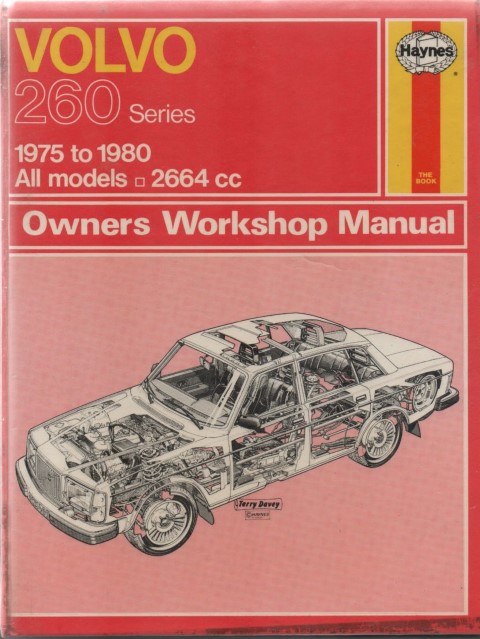



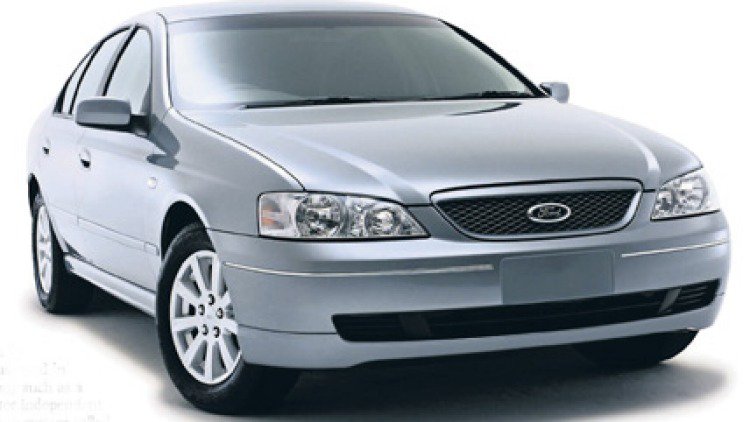
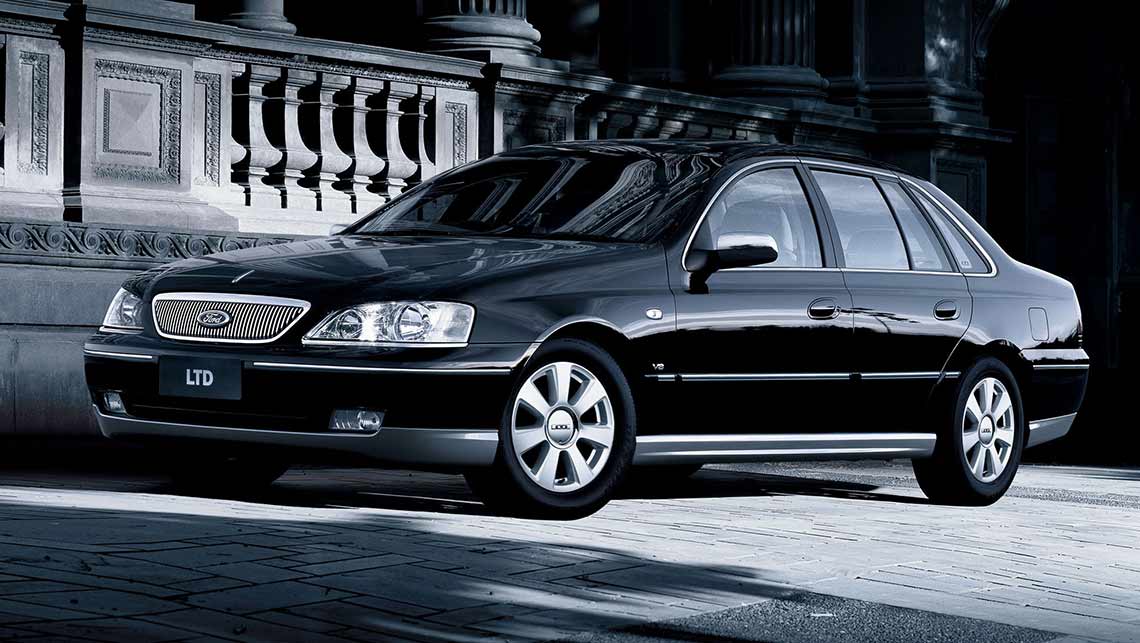
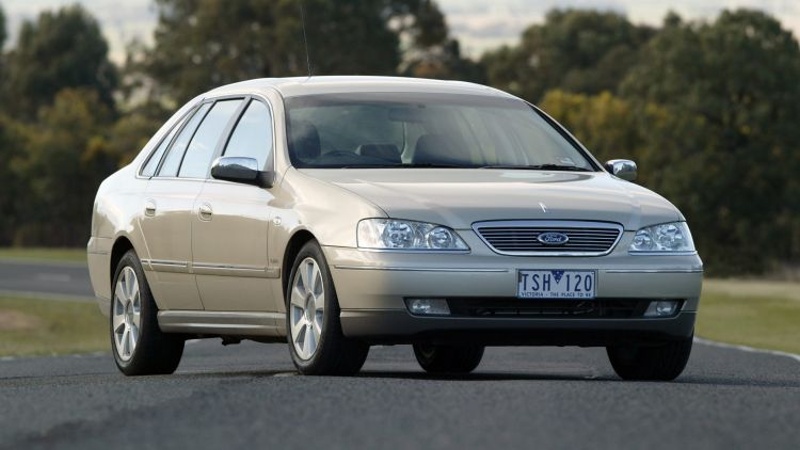
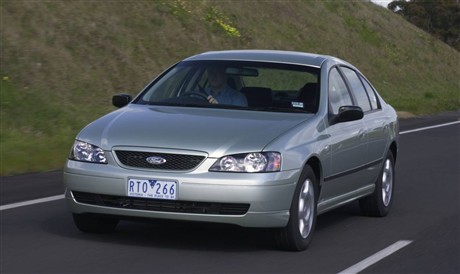
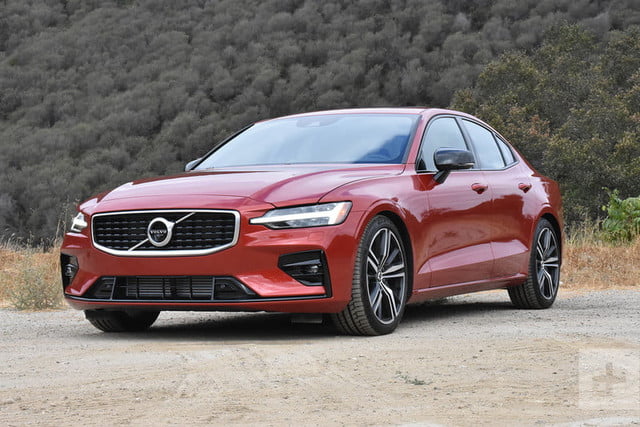
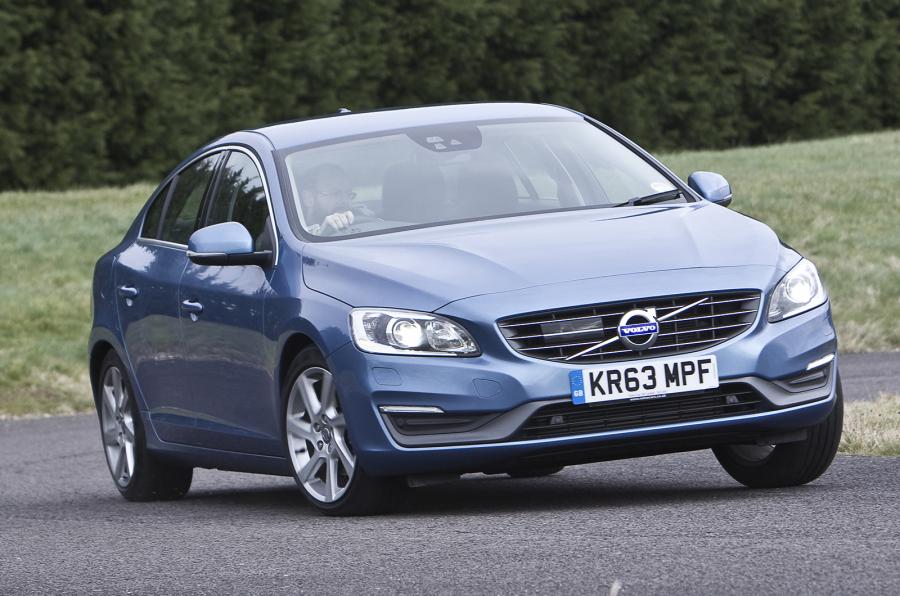
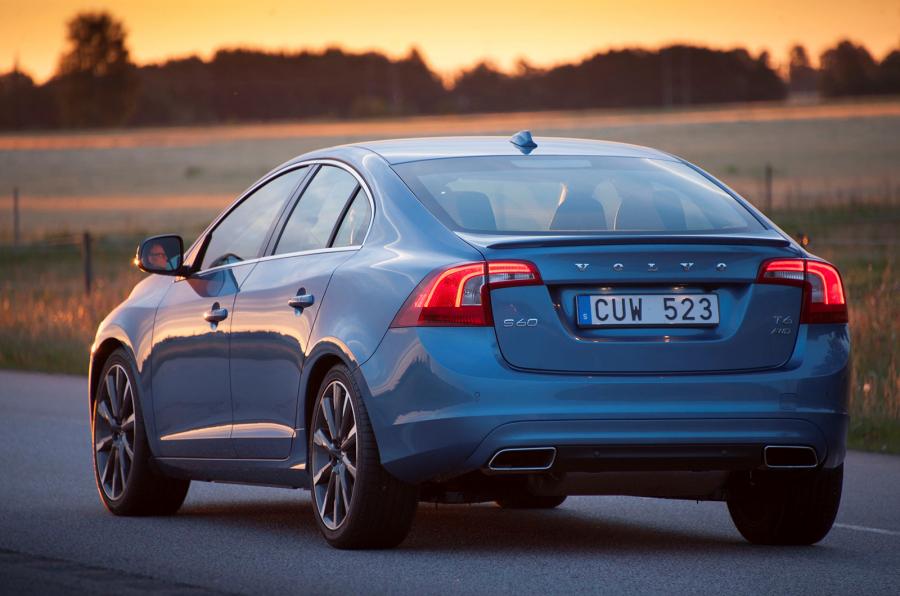
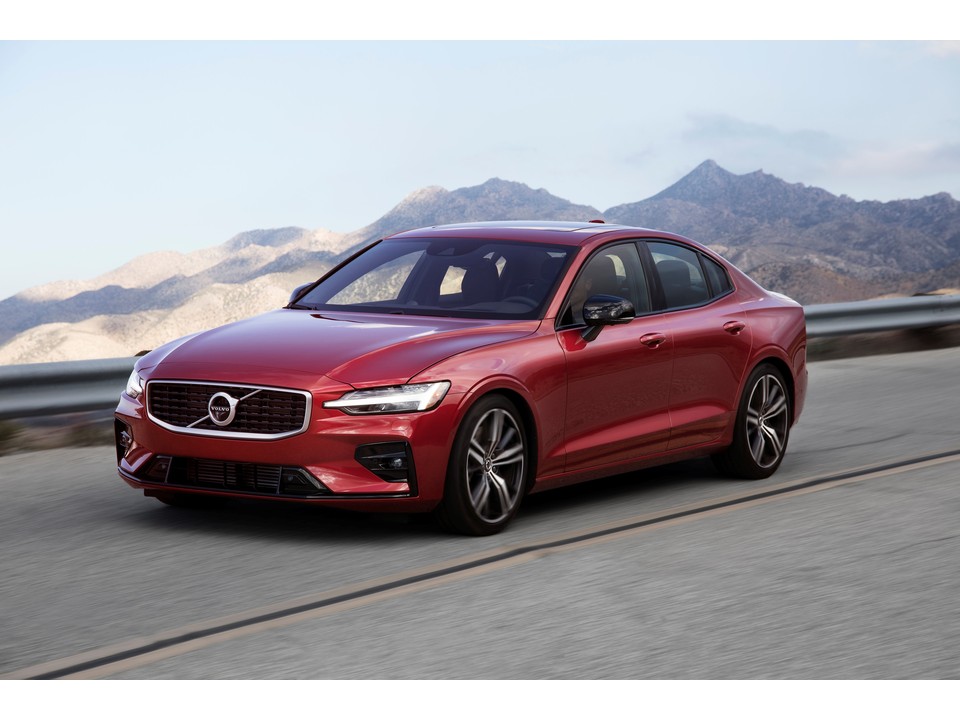
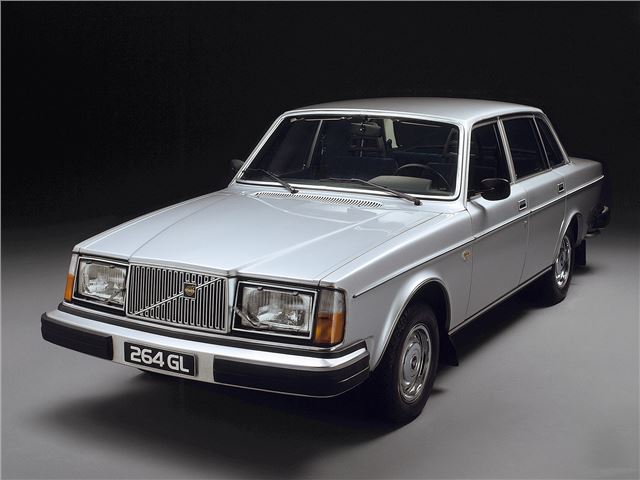
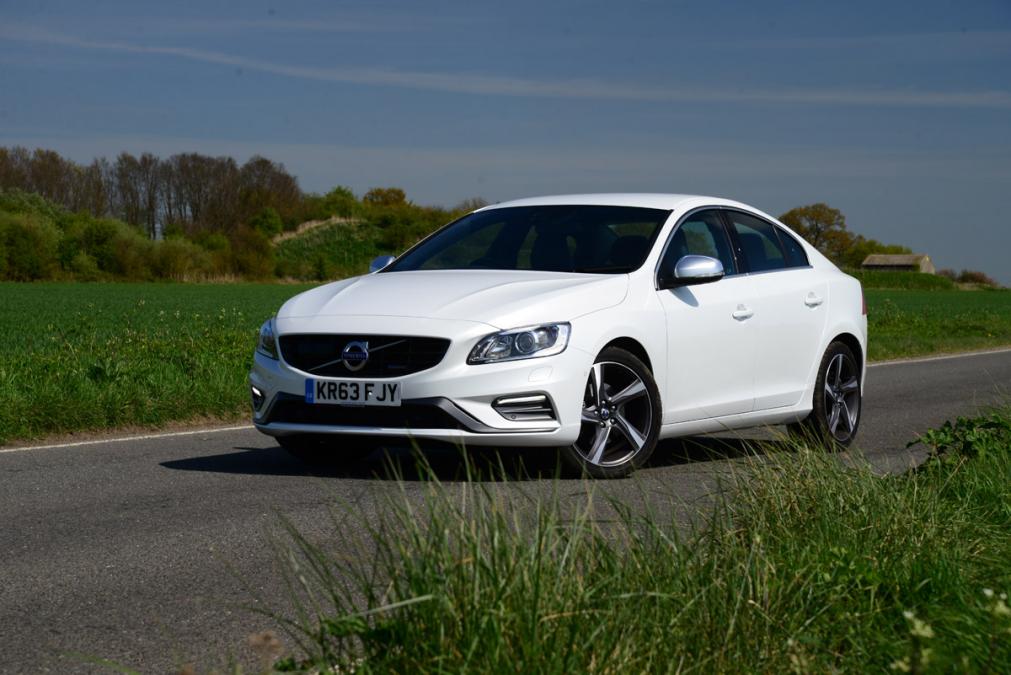
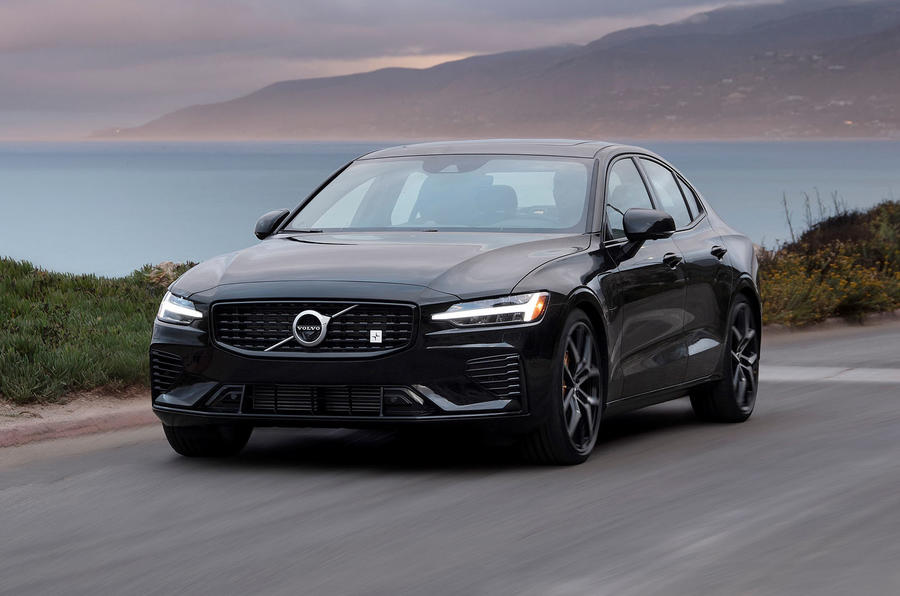 -and-bf-falcon-australias-best-sedans-insufficiently-stylish-and-badlysol.jpg width=820 height=510/>>
-and-bf-falcon-australias-best-sedans-insufficiently-stylish-and-badlysol.jpg width=820 height=510/>>